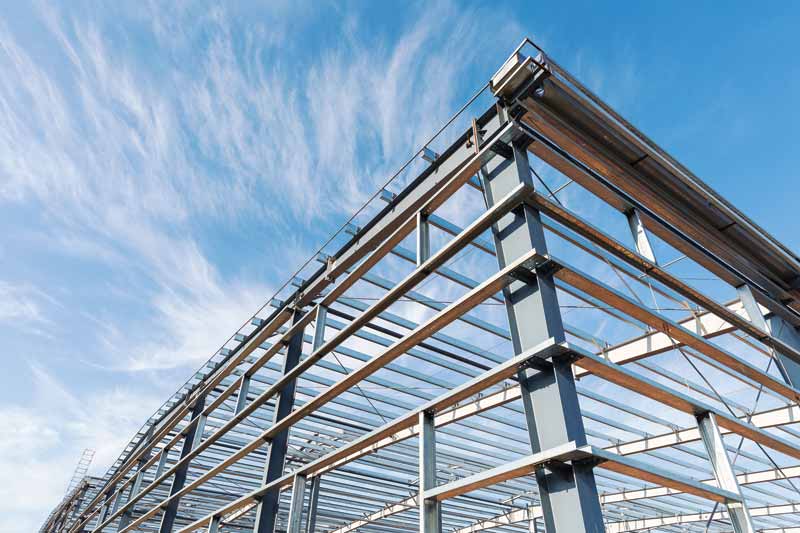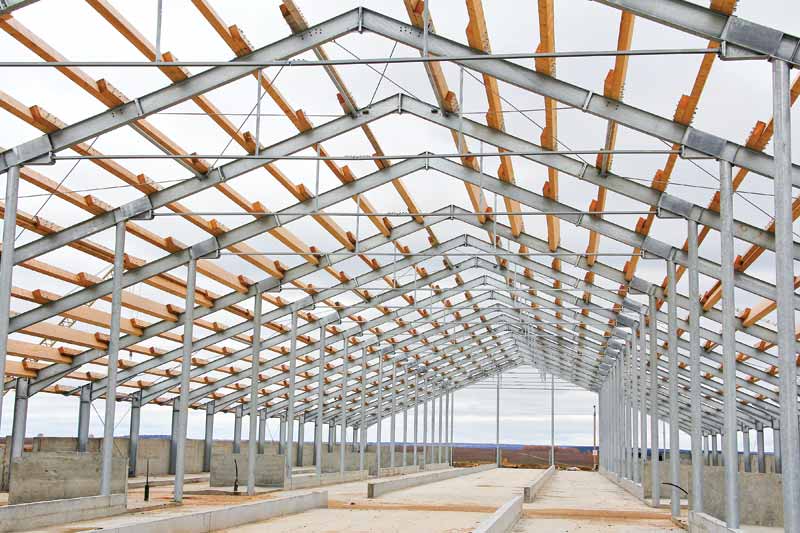Sustainability has become a cornerstone of the modern construction industry, with contractors, architects, and developers seeking materials that minimize environmental impact while delivering exceptional performance. In this era of heightened environmental awareness, metal building systems have emerged as a vital solution, offering an optimal blend of durability, adaptability, and sustainability. This article delves into the environmental and economic advantages of metal building systems, highlighting their pivotal role in shaping a sustainable future.
Environmental benefits of metal building systems
Longevity
Metal panels boast a lifespan exceeding 50 years with minimal maintenance. They far outlast materials such as asphalt shingles, which often requiring replacement every 15 to 20 years. This extended lifespan significantly reduces material waste and promotes long-term sustainability.
Recyclability and reduced waste
Metal building systems, predominantly constructed from steel and aluminum, are highly recyclable. Steel, for instance, can be recycled indefinitely without losing its inherent properties. At the end of a building’s lifecycle, its metal components can be repurposed or melted down to create new products, drastically reducing construction waste. With a recycling rate exceeding 90 percent in the construction sector, steel is one of the most sustainable building materials available.
Energy efficiency
Energy efficiency is a hallmark of metal buildings. Insulated metal panels (IMPs) provide superior thermal insulation, reducing the need for excessive heating or cooling. Many metal buildings also feature coatings with infrared-reflective pigments that reflect solar heat, lowering cooling demands and mitigating the urban heat island effect. These attributes reduce the building’s carbon footprint and generate long-term energy cost savings.
Optimized thermal efficiency
Metal building systems are designed to enhance airflow and ventilation beneath the panels. When paired with additional insulation layers, they create a robust thermal barrier that minimizes heat gain in summer and heat loss in winter. This optimized thermal efficiency reduces strain on HVAC systems, lowering operational energy costs and boosting the project’s overall sustainability.
Reduced resource consumption
The prefabrication process inherent to metal building systems minimizes resource consumption when compared to traditional construction methods. Precision manufacturing decreases material waste, while the lightweight nature of metal components reduces transportation emissions. This streamlined approach contributes to a more sustainable and efficient construction process.
Compatibility with renewable energy systems
Metal roofs are highly compatible with renewable energy systems such as solar panels. Their durability and load-bearing capacity provide a reliable foundation for solar installations, enabling buildings to harness clean energy and further diminish their environmental impact.

Economic benefits of metal building systems
Cost-effective construction
Due to their factory-based manufacturing process, metal building systems offer a cost-efficient solution for construction projects. By producing the main components in a controlled environment, manufacturers can ensure precision and reduce waste.
Integrating computer-aided design (CAD) technology has further revolutionized the process. CAD allows all participants to collaborate during the design phase, addressing potential issues digitally before construction begins. This eliminates costly on-site troubleshooting and ensures a smoother workflow.
With these innovations, metal building systems simplify construction and reduce costs by 30 to 50 percent compared to traditional methods.
Faster production time
Factory production offers significant advantages over on-site fabrication. It provides a controlled environment where systematized, repeatable processes deliver consistent efficiency. This assembly-line approach to manufacturing dramatically reduces production time.
Components are meticulously pre-measured, pre-cut, and pre-punched using advanced machinery, streamlining assembly on the job site. This approach significantly reduces the time and effort needed for fabrication during construction, improving safety and minimizing unexpected delays. Additionally, components can be produced simultaneously while foundations and other preliminary work are completed on-site, further accelerating the timeline.
In contrast, traditional construction often follows a sequential process where subcontractors must wait for the previous phase to finish before starting their work. This step-by-step method leads to extended project timelines and inefficient use of resources. Metal building systems eliminate these delays by allowing multiple tasks to proceed concurrently.
Reducing the project duration can have a significant financial impact; Faster completion means quicker operational readiness, reduced borrowing costs, and enhanced profitability. Metal building systems provide the time-saving advantage that modern construction projects demand.
Simplified maintenance
Metal building systems are designed with simplicity and durability, making them easier to maintain than conventional structures. Unlike wood, which is still common in commercial and residential construction, steel components are immune to pests, mold, rot, and mildew. This resilience eliminates many maintenance challenges that plague traditional materials.
For example, termite infestations can be costly to address, while mold growth poses health risks and can lead to legal and insurance complications. Additionally, rotted wood can jeopardize the structural integrity of a building, requiring extensive and expensive repairs. Metal building systems sidestep these issues entirely, offering a low-maintenance, cost-effective solution for long-term durability.
Long lifespan and high return on investment (ROI)
With proper maintenance, metal buildings often exceed a lifespan of 50 years. This longevity, energy efficiency, and low maintenance costs deliver a high ROI, making metal building systems a sound financial investment for businesses and property owners.
Design flexibility and adaptability
A widespread misconception is metal buildings are restricted to standard, fixed designs. However, modern metal buildings are usually custom-designed by professional architects and engineers to meet specific requirements and purposes. The design possibilities are virtually unlimited, from size and shape to layout, cladding, and interior features.
This flexibility makes metal buildings suitable for a wide range of applications, from industrial facilities to retail spaces, offices, and more. Their adaptability enhances their functionality and increases their aesthetic appeal and overall value. Today’s metal buildings are as versatile as they are practical, providing tailored solutions for diverse needs.
Shaping the future of sustainable construction
As sustainability takes center stage in the construction industry, metal building systems have proven to be an eco-friendly, versatile, and economically viable solution. Their exceptional durability, energy efficiency, and recyclability make them indispensable to sustainable development. By choosing metal building systems, stakeholders in the construction sector can align with global sustainability goals while reaping significant economic benefits. This dual advantage positions metal building systems as a cornerstone of the construction industry’s transition to a greener future.
Michael Vaughn is the marketing manager at Fabral Metal Wall and Roof Systems, where he has worked as part of their marketing and sales team over the last 3 years. Michael has a Bachelor of Science (BS) in Marketing from Clemson University and has a track record for providing targeted and creative solutions as a team leader and 15-plus years of experience designing and executing programs in a variety of industry sectors, including building materials industry & manufacturing, consumer packaged goods, and strategic consulting.


